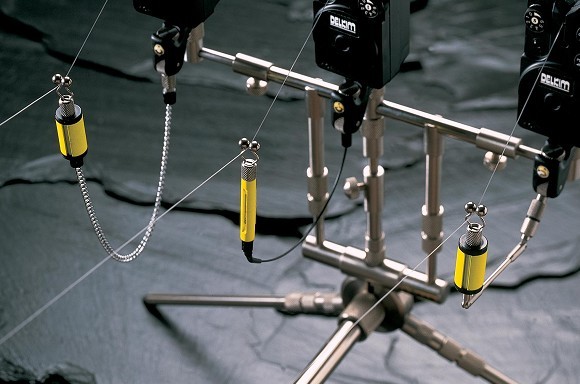
Your guide to indicators
When to use what type of indicator and how to improve your overall bite indication by a staggering 93%
Hanger
The hanger is, without doubt, the most versatile indicator on the market. It can be used for pretty much every situation. The choice of bobbins seems endless, small 3gm bodies to the heavyweight 75gms, covering everything from slack line fishing to ultra tight situations when placing baits at extreme-range on big, windswept lakes. There are many different styles and lengths of chains on the market to suit any angler and situation from three-inches to 12-inches-plus, along with other added extras like choice of line clip and add-on weights. If you want an indicator that you can use in most situations, then the hanger is your number one choice!
EXAMPLE Cygnet Clinga range, cygnettackle.co.uk
Quiver
Quivers are very rarely seen and used in modern angling which is a big shame because they definitely have their purpose and they suit some styles of angling more than any other indicator out there. Quiver or tension arm indicators are primarily designed for super tight line and/or long-range fishing. To get the best out of the quiver, you need to get the tension so tight that the lead is just about to move. This is a balancing act which will come with practise and experience. If you’re thinking of fishing at extreme range or with bowstring tight lines then these are well worth a look if you want the ultimate in bite indication.
Swinger
Again, swingers are a rarely seen indicator on the carp scene today. The rigid arm indicator will assist when on a windy session, as this stops the bobbin head from blowing around, hence eradicating any false bleeps from the alarm. Various styles of swinger mean that they can be used in any angling situations, you can get ones with long arms that can be laid on the deck for slack line fishing and also heavy ones with shorter arms for when fishing out at extreme-range.
Bobbin bushcraft: Ever wondered what the purpose of a line clip is?
Line clips can be put into three categories. The first is in front of the reel to either stop line spill or increase hooking potential. The second is a line clip positioned in front of the buzzer to either prevent false bleeps in extreme windy conditions, reduce ‘line creep’ (and thus bobbins) and to increase hooking potential on very tight lines. And thirdly to enhance bite indication. A correctly positioned line clip produces a more acute angle between the clip and the buzzer. The effect of this angle increases the overall sensitivity of the bite indication system both audibly and visually. Well, now you know.



